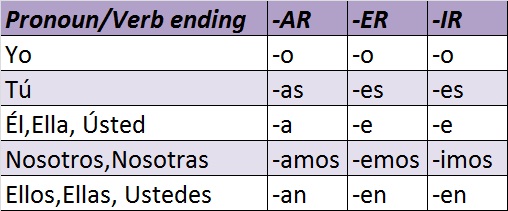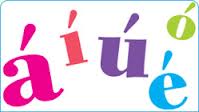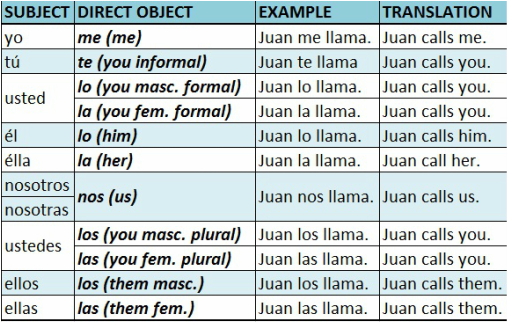|
¿A que hora parte el avión?
(What time does the plane take off?) ¿Por qué está retrasado el avión? (Why is the plane delayed?) Abrochese el cinturon. (Fasten your belt) ¿Puede darme una manta? (May I have a blanket?) Me gustaría una comida vegetariana. (I'd like vegetarian food.) ¿Puedo cambiar de asiento? (Can I change my seat?) Quisiera una siento junto al pasillo/ a la ventana. (I'd like an aisle seat/window seat) ¿Me puede dar un poco de agua? (Can I have some water?)
0 Comments
Listen to the song, sing along and check the translation.
Follow the next steps to form the imperative:
Examples: A: Por favor, hable en francés. (Please, speak in French.) B: Lo siento, no hablo francés. (I'm sorry, I don't speak French) A:Coma las zanahorias. (Eat the carrots) B: No, no me gustan las zanahorias. (No, I don't like carrots.) A:Diga su nombre completo.
(Say your full name) B: Mi nombre es Sandra Lopez. (Mi name is Sandra Lopez) The English verb "ASK" can be understood in two different ways in Spanish. These forms are "Pedir" and "Preguntar" "PEDIR" means to ask for or to request something. "PREGUNTAR" means to ask a question. See the following examples:
Regular verbs are those verbs that end in -ar;-er;-ir. Their conjugation in the simple present is quite simple. Just look at the chart below. To conjugate a verb in the simple present follow the next directions:
One more example with the verb leer:
3 Reglas básicas de la pronunciación del español-Three basic rules for Spanish pronunciation10/15/2015 Rule 1 Stress the second-to-last syllable if the word ends on the vowels (a,e,i,o,u) or the consonants "s" or "n" Examples Mesa (table), Gente (people), Taxi (taxi), Perro (dog) Tribu (tribe), Carros (cars), Miran (they look at) Rule 2 If the word ends in a consonat except "n" or "s", stress the last syllable. Examples Llevar (to carry), Edad (age), Mujer (woman), Verdad (truth), total (total), etc. Rule 3
Many words don't follow the above rules, but they have the accent mark (´) to specifically show which syllable is stressed. Lápiz (pencil), Menú (menu), Canción (song), Árbol (tree), Azúcar (sugar) In Spanish, there are two ways to talk about the weather. You can use the verb ‘hacer’ (to do) or simply the verb be (estar). Look at the following dialogs: ¿Cómo está el clima? (How's the weather?) Está soleado. (It's sunny.) Está frío. (It's cold.) Está humedo. (It's humid) Está nublado. (It's cloudy.) Está lluvioso. (It's rainy.) Está nevando. (It's snowing.) Está muy bueno. (It's nice.) Está muy malo. (It's awful.) Audio¿Qué tiempo hace? (How's the weather?) Hace sol. (It's sunny.) Hace frio. (It's cold) Hace viento. (It's windy) Hace buen tiempo. (It's really nice) Hace mal tiempo. (It's awful.) AudioWant to learn more? Click here to ask for a demo lesson.Los pronombres de complemento directo en español-Spanish direct object pronouns-simple present8/12/2015 A Direct Object pronoun is a noun or pronoun that receives the verb's action. For example: Yo pateo la pelota. (I kick the ball) Yo la pateo (I kick it) Yo=subject; pateo=verb; la pelota=direct object. Notice how the direct object pronoun in Spanish is placed between the subject and the main verb.
The following chart shows the correspondent object pronoun for each personal pronoun.
Asking Yes/No questions in Spanish is really easy. It basically consists on a change of intonation over a simple afirmative sentence. For example: Afirmative sentence: Tú trabajas en el hospital. /Flat intonation/ (You work at the hospital.) Question: ¿Tú trabajas en el hospital? /Rising intonation/ (Do you work a the hospital?) Listen to this example in the following audio. Very often you might want to drop the personal pronoun. Affirmative sentence: Ella tiene dos hijos. (She has two children.) Question: ¿Ella tiene dos hijos? (Does she have two children?) Dropping the pronoun: ¿Tiene dos hijos? (Does she have two children?) Listen to this example in the following audio.
|
Spanish tutorsHello there!! Categories
All
|













 RSS Feed
RSS Feed